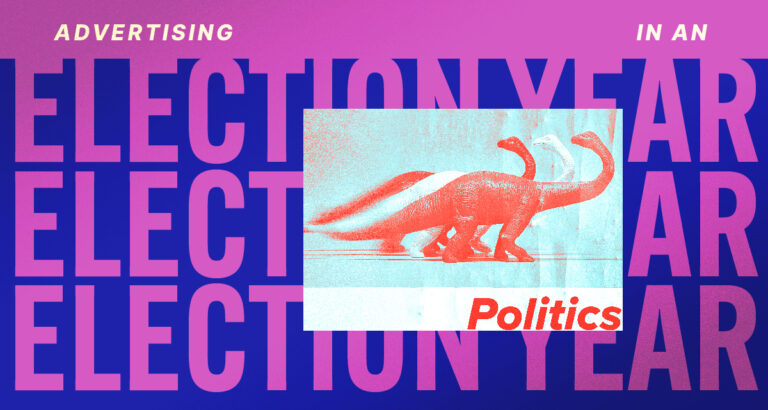By 2023, 65 percent of the world’s population will have its personal data covered under modern privacy regulations, up from 10% in 2020. – Gartner
Over the next month we’ll dive into the five marketing trends our team is paying attention to at the onset of 2021, offering you context, guidance and insight into each one.
This week, we’re talking cookies, not the kind you eat (unfortunately), but the kind that allow you to store your website’s user information and advertisers to target digital ads across the internet. With increasing privacy regulation and changes to how browsers and tech companies are handling cookies, the digital advertising landscape is set to see big changes in 2021 and early 2022.
What’s a Cookie?
First things first: What exactly is a cookie? A cookie (specifically, an html cookie) is a small text file that is stored by a web browser while the user is visiting a website. Cookies are the reason your favorite website can store your login information, how an ecommerce site remembers what’s in your shopping cart, and how that news site advertises the shoes you looked at yesterday to you today. The data a cookie saves usually includes a date, an ID number and, potentially, other information about your visit.
Cookies make the internet more convenient, and while you can block them in your browser’s settings, most people don’t because blocking cookies makes the internet considerably more difficult to use.
First Party vs. Third Party Cookies
It’s important to note that there are two different types of cookies: first party and third party.
First-party cookies are created and stored by the website a user is visiting. These cookies are only accessible to the website owner and are considered first-party data. They can be used, for example, to store a user’s log-in information, send an outbound email or retarget customers on social media.
Third-party cookies are created by websites other than the one a user is visiting. These cookies are typically used by advertising platforms to target audiences.
Privacy Concerns and Regulation
So why are we talking about cookies now? Well, cookies (particularly third-party cookies) have been slowly crumbling since 2018, and that process is expected to speed up in 2021.
Laws in the EU and California have have regulated how websites inform consumers about the cookies they are collecting. The EU’s General Data Protection Regulation (GDPR), which went into effect in 2018, regulated how personal data of EU residents could be saved, stored and used. The California Consumer Privacy Act (CCPA) went into effect in January 2020 and took many of the same steps for California residents.
Google Chrome is poised to stop supporting third-party cookies by early 2022, and there has long been talk of a new federal privacy law that would nationalize much of what California has already put in place.
In fact, Gartner predicts that by 2023, 65 percent of the world’s population will have its personal data covered under modern privacy regulations, up from 10% in 2020.
All this means that as 2021 kicks off, we are in for significant changes to how we store consumer information, as well as how we track, measure and target ads across the internet. The challenge for advertisers and businesses is in figuring out how to continue to offer the personalized, curated content, user experience and ads consumers have come to expect within a new privacy framework.
So what will a post-cookie world look like? We think it will be one where first-party data (or the data a business collects directly from its customers) reigns. Businesses should ensure they have a clear management strategy in place for this data, use it to their full benefit and partner with digital ad platforms that have considered how they will adapt when the third-party cookie officially goes the way of the dinosaur.
What You Can Do Today
Here are a few things you can do to prepare for this new world today:
- Conduct an audit on your site to determine what cookies you have in place and how you are collecting and managing that data.
- If your website has users from the EU or California, you should have a cookie pop-up and privacy statement in place that clearly explain what you collect and that require a visitor to opt-in to using cookies. Review your statements to ensure you’re in compliance with the GDPR and the CCPA requirements.
Mailchimp is a good example of a clear, well-thought-out cookie statement. It has a clear pop-up in the footer of the site that requires you to accept all cookies or review and customize your settings.

The Customize Settings button leads to a pop up with additional information that allows you to accept and reject specific cookies.

- If you don’t need to be in compliance with these laws today, now is a good time to start reviewing your data collection policies and drafting a statement. It’s likely that similar laws will cover all 50 states soon, so you should be prepared.
- Work to forge a personal connection with your customers based on careful collection, segmentation and use of your own first-party data. As the third-party cookie disappears, your this data will become ever more important.
- Review the digital advertising platforms you use and determine whether they use third-party cookies to target and if they have a plan in place for the future. Some platforms, like Google Ads, won’t be affect because they don’t use third-party cookies to target. Others will need to transform they way they approach advertising, and they should be planning for it now.
Are you paying attention to changing regulations around website privacy? What steps are you taking and what questions do you have? We’d love to hear from you in the comments section.
Next week, we’ll cover our second 2021 digital marketing trend to watch: short-form video content.












